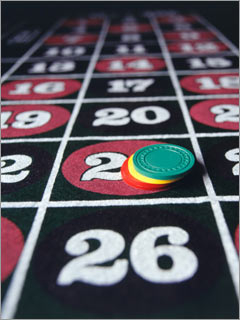Bill Miller: The Kelly criterion is named after J.L. Kelly, Jr., who in 1956 wrote a paper drawing on work by Claude Shannon, the father of information theory. What Kelly did was to take an aspect of Shannon's work and derive a formula that tells you what fraction of your bank roll you should commit to any particular probabilistic endeavor, whether it be a gambling debt, or an investing debt.
If you were 100% certain that a particular investment would pay off at your expected rate then - according to the formula - 100% of your bankroll should go into that investment.
The formula also shows that if you were only, say, 60% sure, then only 20% of your bankroll should go into that proposition.
And if you have less than a 50/50 proposition, you shouldn't bet at all. Which again, makes perfect sense.
I would advise people basically to understand, A) people are overconfident, and B) that therefore whatever probability you think you have of being right, it's probably less than you think. So if you think you have a small edge, you probably don't have any edge at all.
| The Nobel Prize winner wants to help you make better financial decisions. (more) The mutual fund visionary on life, near-death and what investors need to focus on now. (more) he called the tech-stock crash. Here's what he thinks about real estate. (more) |

